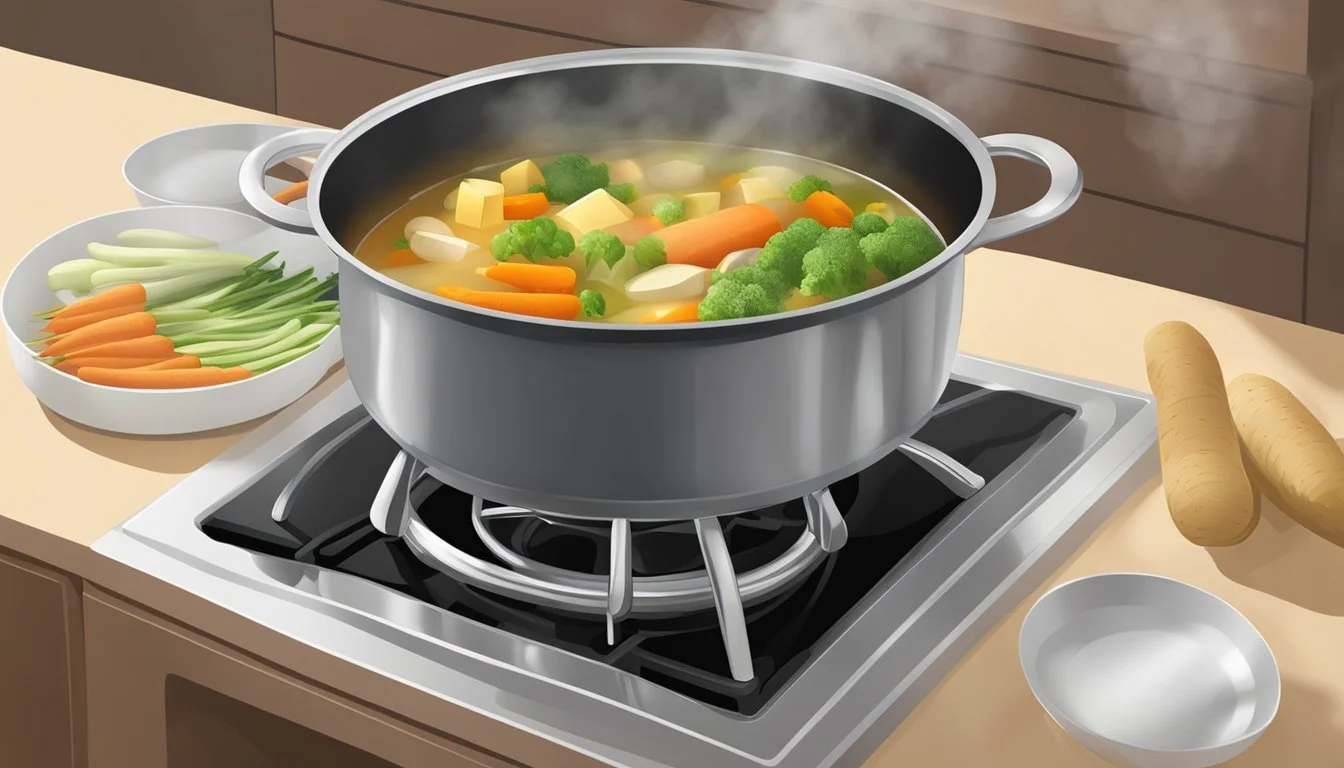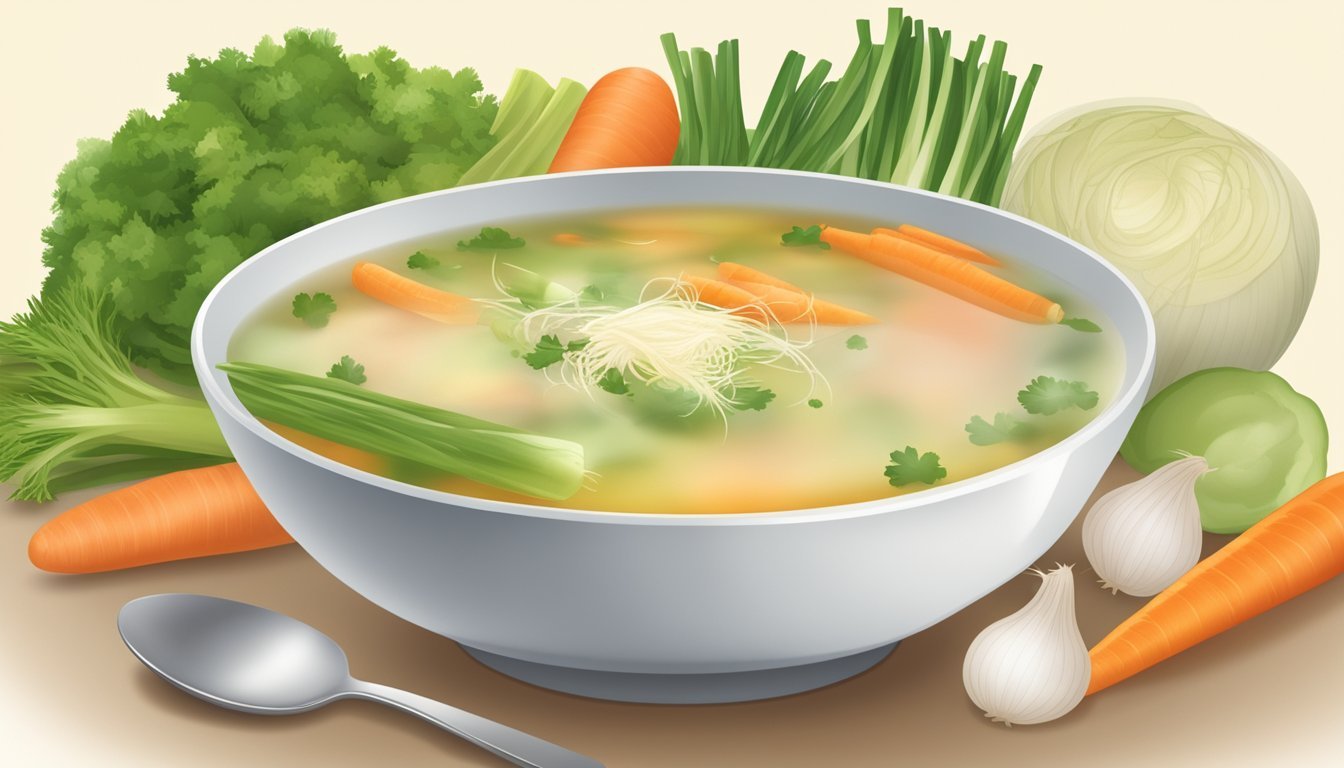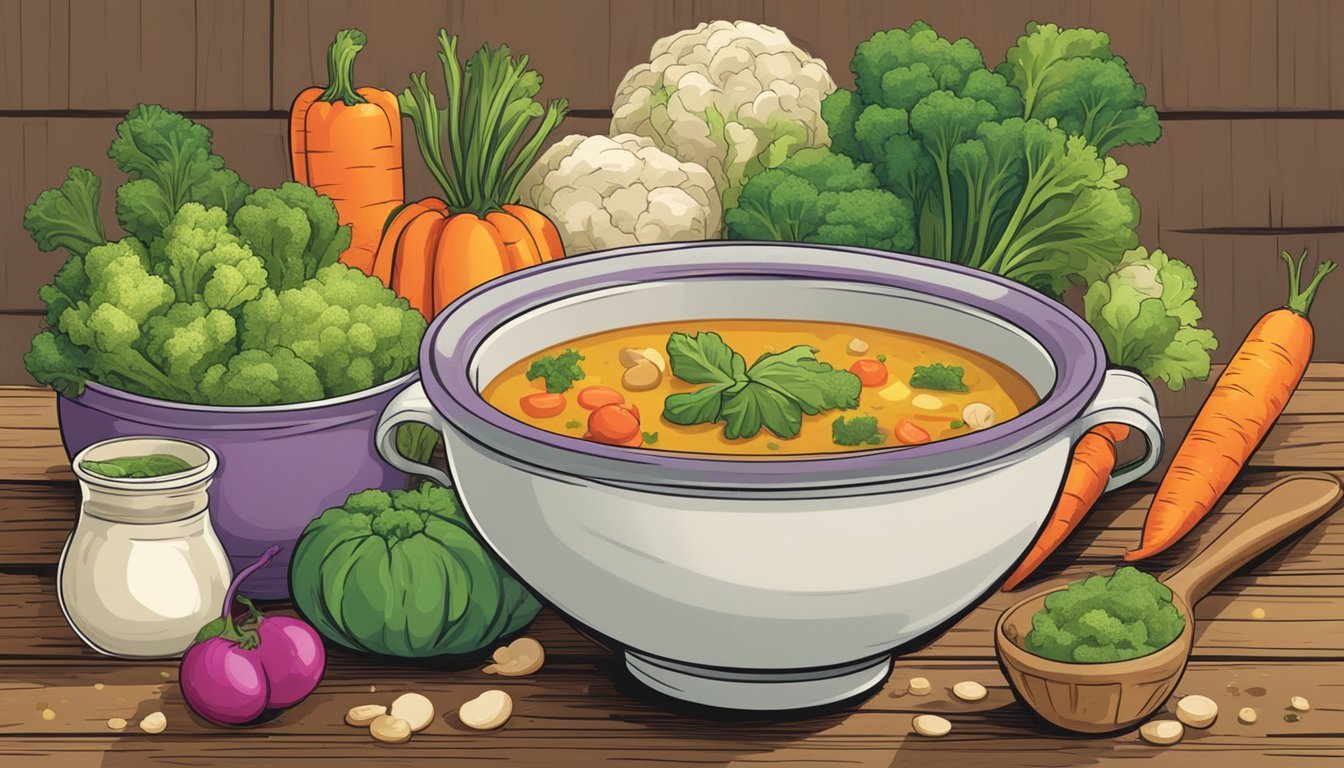Is Vegetable Soup Gluten-Free?
Unveiling the Truth about Soups and Gluten Content
Vegetable soup is often perceived as a healthy option for a nourishing meal, and for those with gluten sensitivities or celiac disease, the question of whether it is gluten-free is of significant concern. Traditionally, vegetable soups (What wine goes well with soups?) are made from a mixture of vegetables, broths, and herbs, and these ingredients, in their pure form, do not contain gluten. However, the complication arises with the addition of thickeners, stock cubes, and certain seasonings, which may contain gluten, transforming what could be a safe dish into one that poses a risk for individuals with gluten intolerance.
Fortunately, with the increased awareness of gluten-related dietary restrictions, there are many gluten-free vegetable soup recipes available. These recipes use gluten-free thickeners, such as cornstarch or naturally gluten-free grains, and ensure that any stock or broth used is labeled gluten-free. For individuals preparing soup at home, it is crucial to be vigilant about ingredient labels, avoiding added fillers or preservatives that could contain gluten.
The market has also responded positively by offering a variety of gluten-free soup brands, making it easier for consumers to enjoy vegetable soup without the worry. When purchasing packaged soups, one should look for clear labeling that certifies the product as gluten-free. In doing so, consumers can reap the health benefits of vegetable soup, with the comfort of knowing that their dietary restrictions have been catered to.
Fundamentals of Vegetable Soup
The fundamental aspects of making a great vegetable soup include a variety of fresh vegetables and seasonings, coupled with proper preparation techniques. This matters because the right combination and method can yield a flavorful, nutritious meal that caters to various dietary needs, including gluten-free options.
Ingredients Overview
Vegetable soup typically begins with a base of aromatic vegetables such as onions, garlic, and celery. These provide flavor depth. The body of the soup often includes tomatoes, carrots, and peppers, while leafy greens like spinach or kale are added for nutrition and color. Herbs and spices, such as thyme, rosemary, and bay leaves, are critical for enhanced flavor. Beans and peas offer a source of plant-based protein. For a gluten-free soup, all ingredients including the broth must not contain gluten.
Preparation Methods
Chopping vegetables into uniform sizes ensures even cooking. Sautéing the base vegetables in olive oil can start a robust flavor foundation. The soup is then simmered with added water or broth, allowing the ingredients to meld. Cooking times vary but generally range from 25 minutes to several hours, depending on the method: stovetop, slow cooker, or instant pot.
Nutritional Information
Vegetable soup is rich in vitamins, minerals, and fiber, with nutrition varying based on the vegetables used. Tomatoes and red peppers are high in vitamin C, whilst dark leafy greens contribute iron and calcium. Adding beans or lentils increases the protein content, making it a more complete meal.
Customizing Your Soup
To tailor the soup to personal tastes or nutritional needs, vegetables can be swapped or added. Sweet potatoes or butternut squash introduce sweetness and creaminess. Chickpeas or lentil soup add thickness and extra protein. For a gluten-free option, avoid barley or wheat-based ingredients, and consider using gluten-free pasta if desired.
Cookware and Equipment
A heavy-bottomed Dutch oven or stockpot is ideal for even heat distribution during simmering. Slow cookers are excellent for long cooking times and flavor development. An Instant Pot can expedite cooking while maintaining taste.
Serving Suggestions
Serve vegetable soup with gluten-free bread for dipping, or pair with a fresh salad for a more balanced meal. It can be a stand-alone dish or part of a larger dinner spread. Leftovers store well in the refrigerator or can be frozen for future meals.
Identifying Gluten in Soups
When evaluating whether a soup is gluten-free, it’s crucial to examine soup ingredients and labels closely since gluten can be hidden in various components.
What Contains Gluten
Gluten, a protein found in certain grains, is commonly present in traditional soup ingredients such as pasta, barley, and farro. Soups thickened with flour, or those containing additives derived from grains that contain gluten, can also pose a risk for those requiring a gluten-free diet. Therefore, key gluten-containing ingredients to watch out for in soups include:
Grains: Wheat, rye, barley
Thickeners: Flour, malt extract
Pasta: Unless specified as gluten-free
Broths: Sometimes contain gluten as an additive
Finding Gluten-Free Ingredients
Identifying ingredients that are inherently gluten-free can aid consumers in selecting safe soups. Ingredients that are naturally gluten-free encompass:
Grains: Rice, quinoa, buckwheat, millet
Thickeners: Cornstarch, potato starch, tapioca
Pasta: Labels that specifically mark the pasta as gluten-free or made from non-gluten grains
Broths: Those that are labeled as gluten-free or organic
An individual seeking grain-free options can opt for soups that use vegetables as the base and include legumes or meat for added substance.
Reading Labels for Gluten
Careful label scrutiny is essential to determine if a soup is devoid of gluten. A label may declare a product to be gluten-free, but it remains important to search for certification marks that ensure compliance with gluten-free standards. Key label elements include:
Certification: Look for seals from recognized gluten-free organizations.
Ingredient List: Scan for hidden gluten in terms like 'modified food starch' or 'natural flavorings'.
Cross-Contamination: Watch for statements about shared facilities or equipment with gluten-containing products.
By understanding the specifics regarding gluten in soup ingredients and employing meticulous label reading strategies, consumers are equipped to make informed choices about their gluten-free soup options.
Gluten-Free Vegetable Soup Essentials
Crafting a gluten-free vegetable soup requires careful selection of ingredients to ensure the final dish is safe for those with gluten sensitivities or celiac disease. From the base broth to the herbs that season the pot, vigilance is key.
Selecting Gluten-Free Broth
Vegetable broth serves as the foundation of any vegetable soup. When purchasing or preparing a broth, confirm that it is labeled gluten-free. Some broths, especially those in restaurants or pre-made versions, can contain additives or have been processed in facilities where cross-contamination with gluten is possible.
Safe brands: Look for brands with a clear gluten-free label.
Homemade: Making vegetable broth at home ensures control over the ingredients.
Choosing Safe Vegetables and Legumes
Vegetables and legumes, being naturally gluten-free, are safe to include in gluten-free soup recipes. Common choices are:
Vegetables: carrots, peas, spinach, potatoes, zucchini, sweet potatoes, cauliflower, kale, celery, broccoli, and cabbage.
Legumes: beans, chickpeas, and green beans.
To ensure safety:
Fresh or frozen: Opt for fresh or plainly frozen varieties with no added sauces or seasonings.
Canned: If using canned items, they must be labeled gluten-free as some processing agents might contain gluten.
Ensuring Gluten-Free Spices and Seasonings
Spices and seasonings add flavor but sometimes include gluten as a filler or anti-caking agent. Use:
Whole or dried herbs: thyme, parsley, basil, rosemary, oregano, and black pepper.
Pure spices: Check for cross-contamination alerts and prefer brands that guarantee gluten-free products.
Precaution: Avoid spice blends unless they're certified gluten-free.
Alternatives to Gluten-Containing Additives
Some soup recipes call for thickeners or additives that contain gluten. For a safe alternative, look for:
Gluten-free pasta: Choose varieties made from rice, corn, or other gluten-free grains.
Thickeners: Opt for grain-free options like arrowroot or cornstarch, ensuring they are labeled gluten-free.
Grain alternatives: Quinoa is a versatile, nutritious substitute for barley or other gluten grains in soup.
By diligently checking labels and opting for safe, gluten-free alternatives, one can craft a delicious and nourishing gluten-free vegetable soup.
Recipe Variations and Ideas
Vegetable soups offer a versatile canvas for gluten-free cuisine, adaptable to creamy blends, hearty concoctions, and light broths adapted for diverse palates and seasons.
Making Creamy Gluten-Free Soups
For a creamy texture without gluten, one can utilize alternatives like coconut milk or a roux made with gluten-free flour. A popular choice is butternut squash soup which naturally lends itself to a smooth consistency when pureed and can be enhanced with a touch of cinnamon for added warmth.
Hearty Soup Options for Winter
Hearty soups are ideal for cold weather, providing a feeling of comfort and warmth on chilly winter nights. Gluten-free grains, like quinoa or rice, can be added to vegetable soups for extra bulk. Options such as hamburger soup brimming with vegetables, ground meat, and tomatoes, satiate any craving for a robust meal.
Light and Refreshing Summer Soups
Summertime calls for lighter fare; gluten-free vegetable soups can be infused with fresh herbs like basil or mint for a refreshing flavor. Gazpacho, a chilled tomato-based soup, is not only gluten-free but also an excellent way to utilize summer-ripe tomatoes.
International Soup Inspirations
Soups can transport taste buds around the world with international flavors. For instance, an Italian soup with a gluten-free broth base can be teeming with vegetables, lean meats, and seasoned with a medley of herbs for an authentic taste experience. Incorporating ingredients like lemongrass, ginger, and coconut milk can evoke the essence of Asian cuisines.
Tips for Cooking and Storing
Creating a delicious gluten-free vegetable soup requires attention to the subtleties of flavor enhancement and preservation of freshness. Ensuring a rich taste profile and extending the longevity of the soup through proper storage methods are key considerations.
Maximizing Flavor
To maximize the flavor of a gluten-free vegetable soup, it is essential to begin with a base of aromatic vegetables sautéed in olive oil. This includes onions, carrots, and celery. Adding fresh herbs such as parsley and basil during the sautéing process will impart deeper flavors. The incorporation of spices like turmeric, cumin, and coriander should be adjusted to personal taste and added when the vegetables are nearly tender to unlock their full aromatic potential.
Storage and Freezing Techniques
For storage, soup should be allowed to cool to room temperature before refrigerating. It can be kept in the refrigerator for up to 3-4 days in airtight containers. For freezing, portion the soup into freezer-safe containers or bags, leaving some room at the top for expansion. Soup can be frozen for up to 2-3 months. To thaw, one should ideally move the soup to the refrigerator 24 hours before reheating.
Quick and Easy Preparation Tips
To expedite prep time, use pre-chopped vegetables, and consider an Instant Pot for a quicker cooking process. For stovetop cooking, bringing the soup to a boil and then reducing the heat for a simmer can shorten the necessary cooking time while still releasing the flavors of the ingredients effectively.
Soup Pairings and Complementary Dishes
Gluten-free vegetable soup makes a complete meal when paired with gluten-free bread or a crisp salad. These additions contribute a satisfying crunch and freshness that complements the hearty warmth of the soup. When selecting bread, opt for varieties that are certified gluten-free to ensure there is no cross-contamination.
Sharing and Social Engagement
Sharing and social engagement are pivotal for anyone eager to connect with a community of cooking enthusiasts, promote their gluten-free vegetable soup creations, and refine their recipes based on the feedback and suggestions they receive from followers and peers.
Engaging with a Community of Fellow Cooks
Joining cooking forums and participating in discussions can be an excellent way for individuals to engage with other cooks who are passionate about gluten-free diets. Sharing experiences and swapping gluten-free vegetable soup recipes can foster a strong sense of community.
Promoting Your Creations on Social Media
Using platforms like Instagram or Pinterest, one can showcase their gluten-free vegetable soup by posting high-quality images and using relevant hashtags. This not only promotes their creation but also helps to inspire others looking for gluten-free options.
Gathering Feedback and Suggestions
Feedback is critical for improvement. Cooks can encourage followers to comment on social media posts or submit suggestions via direct messaging. This interactive process can provide valuable insights to further refine recipes and cooking techniques.
Health Benefits and Dietary Considerations
Vegetable soup can be a nutritious addition to a balanced diet, offering a variety of vitamins and minerals while accommodating specific dietary needs, such as gluten-free, vegetarian, and vegan.
The Role of Vegetable Soup in a Balanced Diet
Vegetable soups serve as an excellent source of daily nutrients, essential for maintaining a healthy lifestyle. Rich in vitamins, such as Vitamin A from carrots and Vitamin C from tomatoes, these soups provide an array of health benefits. They are also low in calories yet high in fiber, aiding in digestion and promoting satiety, which can be beneficial for weight management.
Vegetable Soup for Specific Dietary Needs
Individuals following specific dietary guidelines, including vegetarian, vegan, or gluten-free diets, can enjoy vegetable soups as a staple food. It's important to ensure that the soup is prepared without ingredients containing gluten, such as certain thickeners or barley, to meet gluten-free needs. For those adhering to vegan or vegetarian diets, vegetable soup provides a substantial meal without the use of animal products, making it a versatile and inclusive dish.
The Importance of Nutrients and Vitamins
A bowl of vegetable soup is more than just comforting; it is packed with essential minerals and vitamins necessary for overall health. Minerals such as potassium, found in peas and sweet potatoes, support cardiovascular health. The vitamins present in vegetable soup, such as vitamin K in leafy greens or vitamin E in vegetable oils used in sautéing, play critical roles in blood clotting and protecting cells from oxidative damage, respectively. These components make vegetable soup a powerful tool for supporting a strong immune system and overall well-being.







